How Do We Build an Infrastructure That Makes Credentials Usable?
Here’s the inconvenient truth: In the United States, credentials often don’t work the way they should.
At Microcredential Multiverse, we talk with hundreds of organizations every month, and the same question keeps coming up:
“What is a credential actually worth if no one knows what it means, where it came from, or how to use it?”
A Broken System with No Common Language
Right now, our skills ecosystem is fragmented. More commonly, this phenomenon is called “The Skills Emergency.”
In the United States, every state, platform, and provider seems to have its own definitions, standards, and tech stacks to address this global challenge. Alongside the universal call to action for traditional learning providers - institutions, professional associations, and non-traditional PD providers - large companies like Google, IBM, Salesforce, and Walmart have addressed their own internal skills gaps by creating credentials aligned with their specific needs. Many of these credentials have delivered measurable value and career outcomes for learners and workers.
Additionally, universities, community colleges, technical schools, K–12 districts, bootcamps, accelerator providers, and state agencies have started designing solutions in strategic sectors of the local, regional, and national economy.
But these are all supply-side solutions—and they don’t always meet that supply with clear, consistent demand from employers or other consumers and recognizers of these credentials.
Going back to the skills mismatch…
If employers can’t understand the outcomes of these programs—the micro-credentials and learning pathways—or don’t know how to use them, there’s no clear value proposition for learners to earn them.
Learning experience providers, learners, and employers are all sending strong signals—but without a shared way to interpret them, they end up isolated, misaligned, and stuck. What we need is a Currency-Generating Rosetta Stone for Skills: a common translation layer that allows each stakeholder to understand, trust, and respond to the signals coming from the others.
The Solution Starts with Currency
For the last decade, I’ve used a term that’s now gaining traction as supply-side capacity grows in the U.S. - credential currency.
“Credential currency is evidence of demonstrated (and validated) skills and competencies that is portable, verifiable, and valuable. Not participation trophies—real credentials that learners can leverage in the labor market to unlock measurable outcomes: jobs, apprenticeships, promotions, access to degree programs, and more.”
That means building a system where skills are:
Useful
Aligned to in-demand roles that pay living wages.
For example, the Fast Track Manufacturing Pathway hosted by Savannah Tech helps transitioning service members access well-paying, high-skill jobs in civilian companies.
Usable
Recognized and shareable across platforms
For example, nursing and healthcare pathways developed by Alamo Colleges support learning-to-career pathways.
Used
Proven to lead to jobs, wages, and upward mobility
For example, micro-credentials offered by BCSI helped Oscar Ramirez land a role as a Quality Control Microbiology Technician at Millipore Sigma.
What Makes Credential Currency Flow?
Countries that get this right, such as New Zealand and those in the EU, have built intentional infrastructures.
They’ve:
Integrated micro-credentials into national education frameworks and governance
Established portable digital wallets with on-demand, verifiable, skills-aligned records
Created cross-border recognition systems to support transferability and recognition of prior learning
In other words, they’ve built trust, consistency, and proof into the system. And it’s working.
What an Ideal Infrastructure Looks Like in the United States
To achieve this vision of a unified skills ecosystem, the U.S. must shift from fragmented innovation to connected systems.
That requires:
Common frameworks with shared definitions of skills
Rich metadata built on open standards, allowing humans and machines to read/write records across ecosystems
Learning pathways that show how short-term credentials stack into degrees and careers
Digital wallets that store, secure, and share credentials while honoring self-sovereign identity
Verification infrastructure to build trust, reduce friction, and eliminate fraud
Public–private partnerships to align training (supply) with labor market needs (demand)
The Call to Action: What the Wild West Needs to Grow Up
We’re not short on ideas or tech. We’re short on coordination and collaboration.
We need shared policy, strategy, and governance to drive interoperability—employers who signal which credentials they trust, and learning providers who embed transparency and market value into everything they offer.
I happen to appreciate that we have 50 unique laboratories serving diverse communities, and I don’t believe the answer is more standardization. What we need is a well-understood, common exchange rate - a shared language that allows a credential from one state or system to mean something in another.
Because the future of work isn’t about where you learned, how long it took, or even how you did it—it’s about what you can do with the verifiable, rigorously assessed skills and competencies you’ve acquired.
The systems we build today will determine who gets seen, hired, and elevated tomorrow.
Together, let’s build a global skills infrastructure that works.
And when we get it right? Learners and workers won’t apply to jobs—the jobs will apply to them.
Want more insights like this?
The article above was originally published in Skills Scoop on April 15, 2025. You can read it here.
Skills Scoop is the 100% free no-strings-attached newsletter for leaders shaping the future of learning, work, and digital credentials. If you’re in education, workforce development, or just curious about how skills are changing the game - this is your monthly must-read.
Subscribe now and stay ahead of the curve in this rapidly-evolving space!


